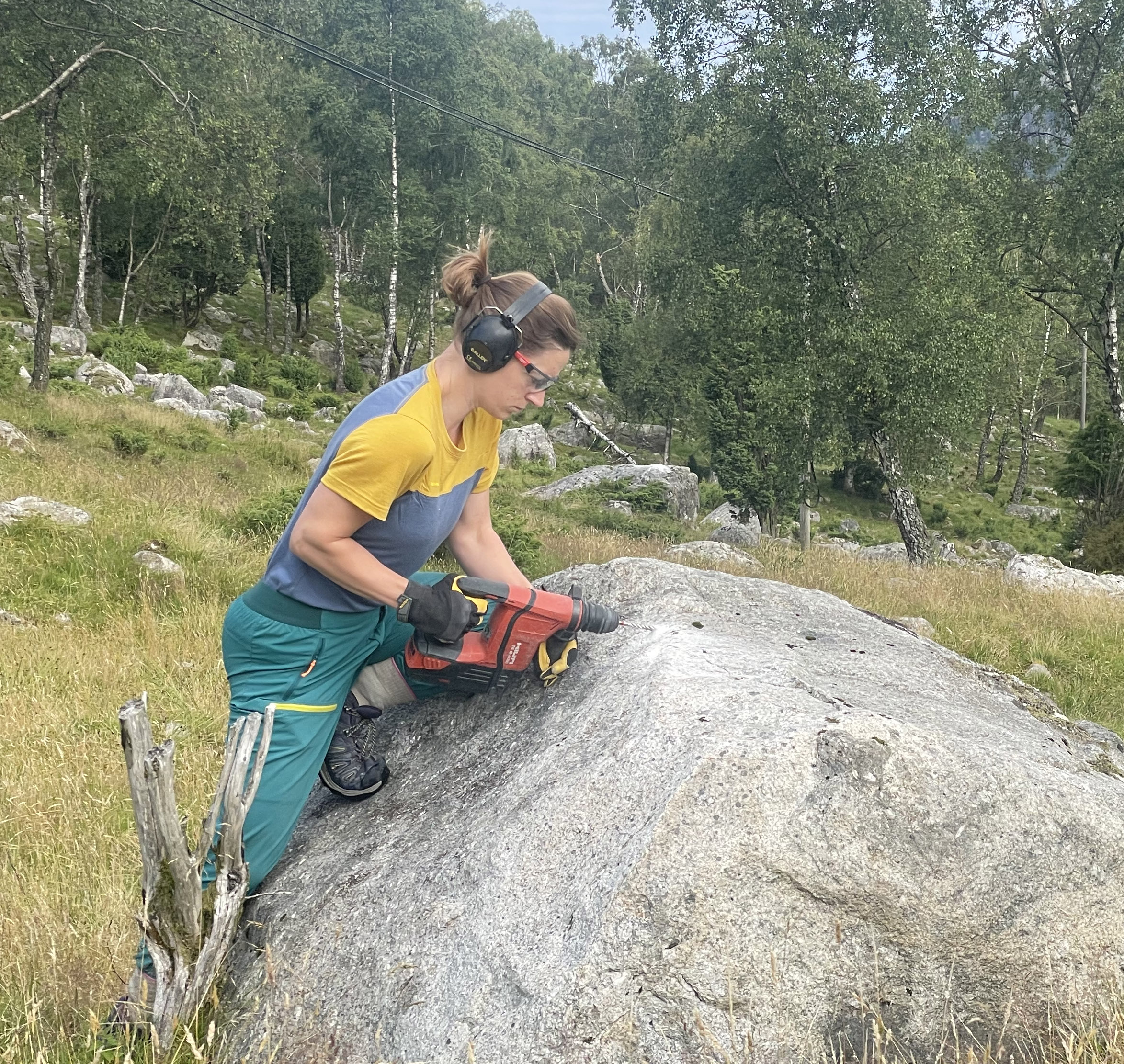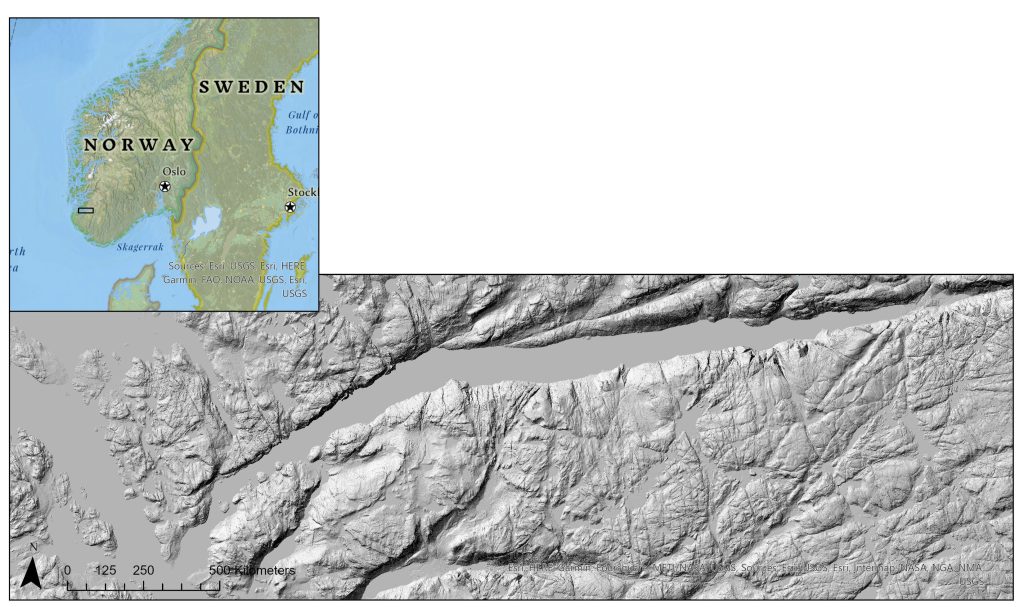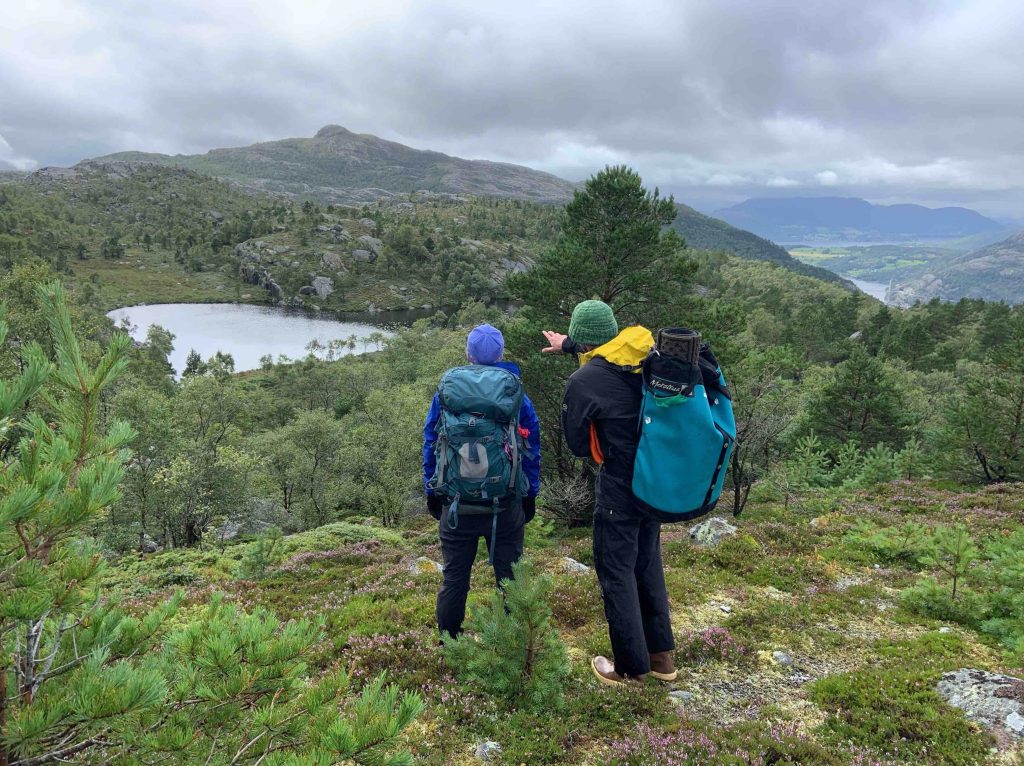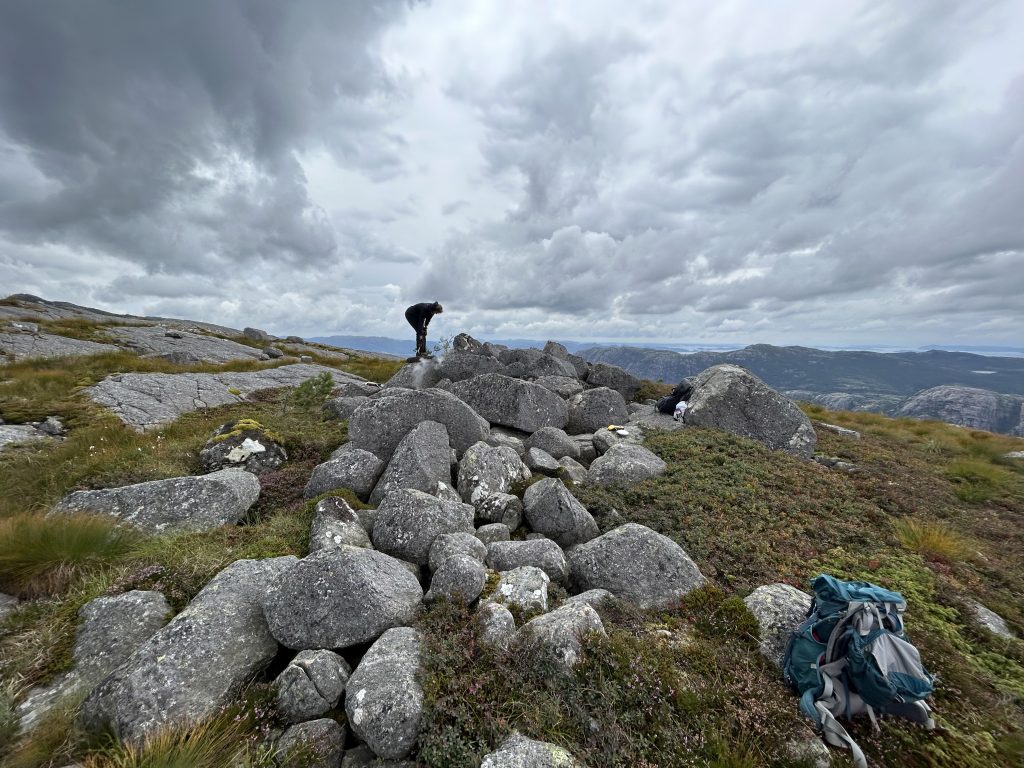
Developing a 10Be moraine chronology for late-glacial resurgence of the Scandinavian Ice Sheet in Lysefjord, southwestern Norway
Expedition Location: Lysefjord, southwestern Norway
Expedition Dates: August 2023
Field Team Members:
Tricia Hall Collins (PhD Student, UMaine) Field Trip Leader, Katie Westbrook (MS Student, UMaine), and Dr. Aaron Putnam (UMaine).
Funding Support: The Robert and Judith Sturgis Family Foundation
Background & Study Area:
I completed fieldwork in Lysefjord (figure 1) in southwestern Norway during August 2023
alongside master’s student Katie Westbrook and Dr. Aaron Putnam. We received critical funding
support from the Robert & Judith Sturgis Family Foundation, for which I am grateful. This
fieldwork will serve as the basis for a significant portion of my thesis, which will focus on
clarifying plausible mechanisms for abrupt climate change during the end of the last glacial
period. Katie’s and my datasets will provide a complete chronology of glacial change within
Lysefjord during the end of the last glacial period. Conducting fieldwork was critical because our
work relies on collecting samples from glacially deposited boulders (figure 2). We will
ultimately measure how much 10 Be is contained within quartz grains in each sample, as this
accumulates from cosmic ray bombardment once a boulder has been deposited by a glacier.
From there, we can calculate when in time the glacier deposited each boulder, which will tell us
about ice extent and rates of retreat and readvance.


Methods:
To find the best boulders for sampling, we hiked daily (figure 3), drove along Norway’s winding roads, and even took a couple of ferry rides. We used a variety of tools to collect our samples, including a hammer drill (figure 4) to create a hole in the boulder into which we loaded small charges to blast off a sample (figure 5). We shipped our samples home to Maine and are beginning the time-consuming work of crushing the rock samples, cleaning the quartz grains that contain the 10Be isotopes, and finally extracting the 10Be isotopes to send to Lawrence Livermore National Laboratory to measure how much 10Be is contained in our samples. We anticipate having a first batch of data by early 2024.




